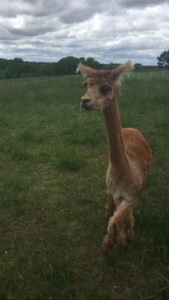May 24th
This morning Reid and I ate breakfast with Denny Neubauer and his fellow farming friends at the local Zederbaum at 7:00 in the morning. These were men who had farmed in Radcliffe, Iowa probably since before I was born and their farms had most likely been in their families since before my parents were born. These were corn and soybean guys. I knew one of the first questions to be asked of me was what I planned to do with my life post-grad and I also knew that my answer would shock them. This was one of the first questions Tom, board member of Rural Electric and longtime farmer, asked me. I told him I wanted to eventually own and operate my own organic farm and almost immediately another gentleman at the table immediately asked me whether I’d grown up on a farm or if I had land. The answer to both of these questions is no but I understand why they are asked of me often. Most famers today come from a long line of farmers and an inheritance of land. And as the number of farmers continues to dwindle, beginning small farms are uncommon as well. Especially in Iowa.
I expected raised eyebrows at this girl who wanted to farm, but Denny, whom I didn’t know very well, did something unexpected. He interjected into the conversation and said something along the lines of, “This girl can work, I saw her carrying around 2 hundred-pound suitcase weights yesterday, messing around with the boys.” A couple guys laughed and this comment seemed to immediately give me some street cred at the table. It gave me room in the conversation to interject at points. When the subject of renewable energy, windmills and their occasional faultiness came up, I told them about a guy we’d talked to who worked on them. If lightning strikes within a mile, these windmill technicians ask no questions. They stop what they’re doing and hop in the elevator and get out of the windmill.
At the breakfast table, I don’t think my credibility came about because I could lift some heavy weights. I think it was the fact that Denny stepped in and vouched for me at the table, following a tradition among groups of humans that gather together for various reasons. Denny displayed some sort of respect for my ability to work and the other men at the table saw me as a somewhat common individual.
I think this phenomenon also goes back to the integrity in a hard day’s work. The pride that one (traditionally a man) gains from being strong enough to work the soil, farm the land, and produce a bounty from nature is still present at this table of an aging generation of farmers.
But it saddened me that their notions of farming are no longer relevant. Since coming to Iowa, I’ve learned that farming has become a capital-intensive field when it used to be a labor-intensive field. When these men began farming, you could work hard and make enough money to support your family. Now, GPS systems in tractors are more common than not. Planting better corn used to pay off but now that everyone plants with genetically modified seed, the playing field is leveled and it’s a matter of who can stay afloat.


